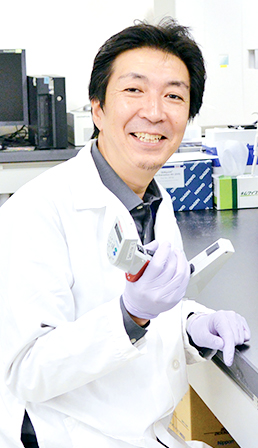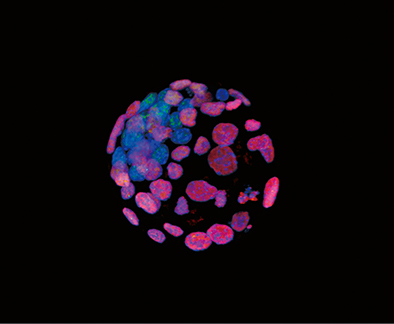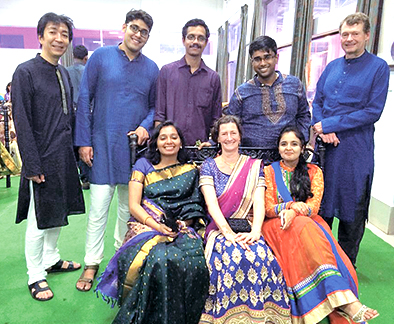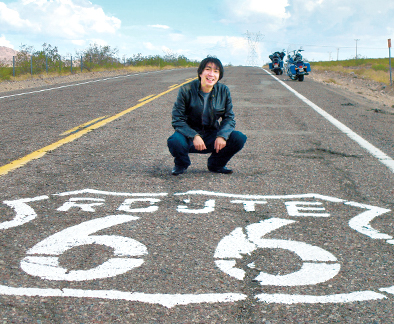Focus on your interests to lead the way
“Animals have so many different shapes. How interesting!” Hasegawa’s boyhood excitement motivates him even today. Driven by curiosity, he maintains a stance of “doing what I like”, which now is investigating the mystery of animal body formation through stem cells. Stem cells can “differentiate” into various types of tissues/organ cells. Understanding and controlling such differentiation contributes innumerably to fields such as regenerative medicine and drug development. Fascinated by this quest, Hasegawa energetically pursues research in Japan, India and Australia.
Program-Specific Research Center Junior Associate Professor
Kouichi Hasegawa
Kouichi Hasegawa
“Why do animals look so different from each other?” This simple question was how Hasegawa, born and raised close to nature in Tamana City of Kumamoto Prefecture, started towards research.

Born in 1972 in Kumamoto, Japan. Graduated from Hiroshima University in 1995, with major in zoology from the Department of Biological Science. Received a PhD in 2000 from Kwansei Gakuin University Graduate School of Science. Held positions as Researcher with Institute for Frontier Medical Sciences, Kyoto University and Assistant Professor at Department of Cell and Neurobiology, University of Southern California. Has served as Junior Associate Professor of iCeMS Satellite at NCBS-inStem and Assistant Professor of NCBS-inStem in India since 2011, as well as Senior Researcher with Faculty of Medicine, Dentistry and Health Sciences, University of Melbourne since 2014. Works as an advisory board for some entrepreneurial ventures.
Hoping to study only animals
Hasegawa prioritizes what he likes, so much that people ask, “How can you be so careful in your experiments while being so careless about your daily life?” For this reason, he chose Hiroshima University, where he could specialize in zoology from year one.
Hasegawa’s study convinced him that organized development was key to understanding animal morphology. Consequently, he wanted to conduct graduate study with Prof Tsutomu Kinoshita. Just then, however, Prof Kinoshita was promoted to Kwansei Gakuin University, where chemistry was mandatory in the postgraduate exam. Hasegawa, obsessed with biology, had hardly studied chemistry, but he still wanted to join. He intensely studied, successfully passed the chemistry exam, and realized his ambition to study embryology under Prof Kinoshita. “He drilled into me the ABCs of research, including how to formulate a question, perform experiments and write a thesis and scientific manuscripts.”
Encountering stem cell research and working overseas

In 2000, when Hasegawa completed his doctorate, Japan had scarce job openings. To pursue research further, rather than job hunting, he joined Dr Norio Nakatsuji’s laboratory, then at the Institute for Frontier Medical Sciences, Kyoto University. “At first I was in charge of preparing genetically engineered mice. As Prof Nakatsuji recognized my experimental skills, I transitioned to deriving embryonic stem (ES) cells for monkey and human embryos.”
Years later, at Prof Nakatsuji’s suggestion, Hasegawa applied to the laboratory of Prof Martin Pera, a renown stem cell researcher. Prof Pera was just leaving Australia to work in the United States, so Hasegawa followed him to the University of Southern California. There, under Prof Pera’s influence, he established his research style and mastered American research grant applications.
Traveling and research across three countries
In the aftermath of the economic crisis of 2008, Hasegawa was called back to Japan by Prof Nakatsuji, then director of iCeMS. He asked Hasegawa to launch an iCeMS satellite laboratory at the National Centre for Biological Sciences (NCBS) in India. “I was quite puzzled, but I am not a kind of person who rejects someone’s requests [laughs].”
NCBS had ample start-up funds, but its facilities were still under construction. Kyoto, on the other hand, had facilities but not enough research funds for Hasegawa at the mid-year. He was at a loss as to how to proceed when Prof Pera contacted him to ask for help launching a laboratory at the University of Melbourne. Hasegawa immediately accepted his request and headed for Australia. “The start-up was certainly a hard work, but I was able to use an adjacent lab to conduct my experiments in my spare time. The three months I spent there were very fulfilling, and I successfully completed two papers.”
Since then, Hasegawa is mainly based in Kyoto and India, flying back and forth between the two almost monthly and visiting Australia on a regular basis. “In fact, I just came back from India yesterday! I conduct my research in those three places, but what I do is totally different because each location has its own facility condition, fund status and research climate.” In Kyoto, he conducts basic research on stem cells, whereas in India he utilizes stem cell differentiation to search for cures for malaria or other diseases. “Now that I have a base in India, I definitely want my research to help Indian people. And I also hope that my basic research in Japan, as a foundation for medical treatment and technology, will help many patients.”


Cooperation: Kyoto Tsushinsha Press
*This article was originally published in the newsletter “iCeMS Our World Your Future vol.3”. All the information on this page, including the researcher’s affiliation, is current at the time of publication.